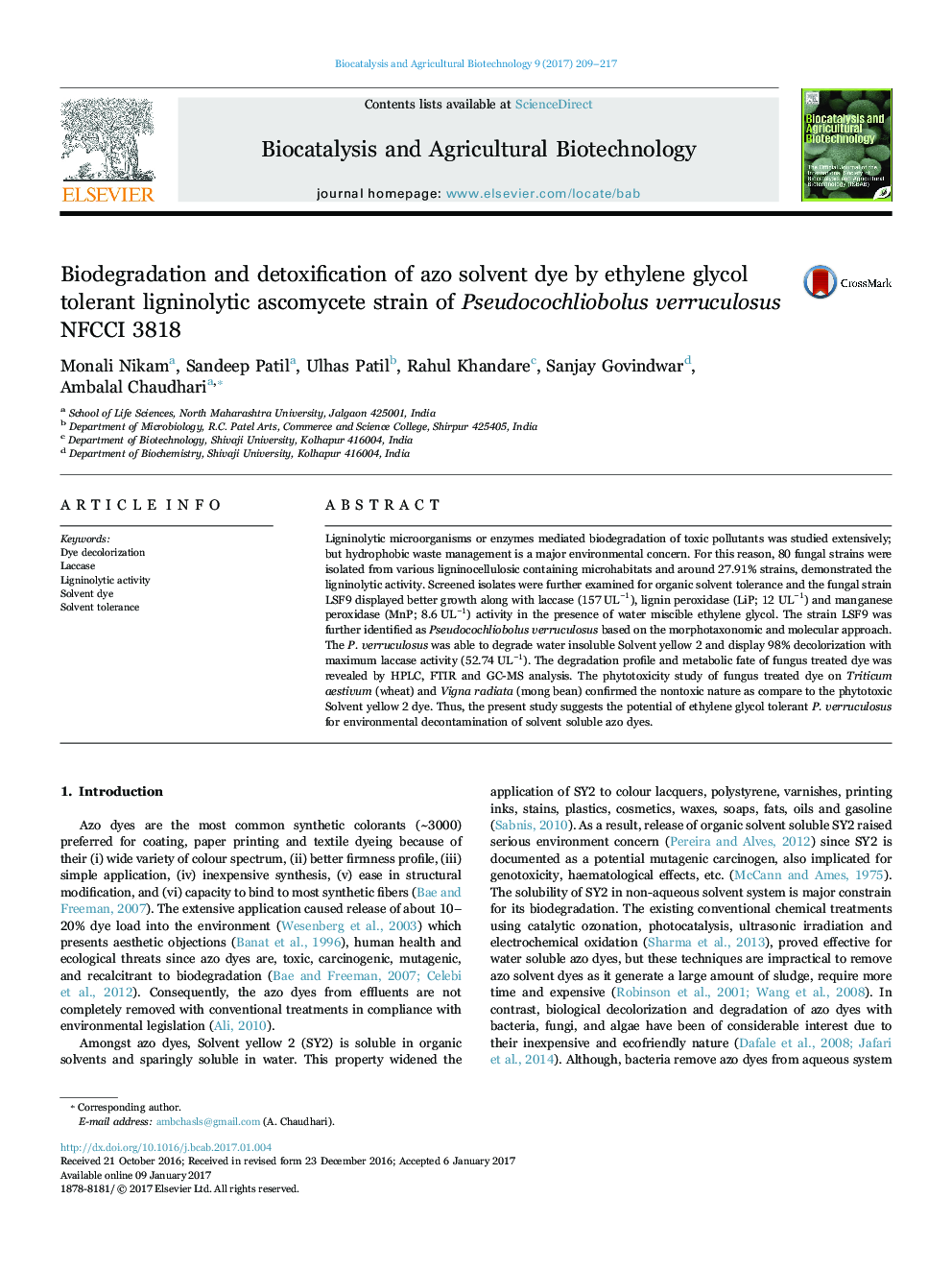| کد مقاله | کد نشریه | سال انتشار | مقاله انگلیسی | نسخه تمام متن |
|---|---|---|---|---|
| 5520580 | 1544903 | 2017 | 9 صفحه PDF | دانلود رایگان |

- Study reports fungal isolates with ligninolytic enzymes and solvent tolerance.
- Solvent tolerant laccase from solvent tolerant P. verruculosus.
- Degradation and metabolic fate of hydrophobic azo dye by P. verruculosus.
- Metabolite based degradation rather than the sorption based degradation.
- The detoxification of degraded dye was ascertained with phytotoxicity study.
Ligninolytic microorganisms or enzymes mediated biodegradation of toxic pollutants was studied extensively; but hydrophobic waste management is a major environmental concern. For this reason, 80 fungal strains were isolated from various ligninocellulosic containing microhabitats and around 27.91% strains, demonstrated the ligninolytic activity. Screened isolates were further examined for organic solvent tolerance and the fungal strain LSF9 displayed better growth along with laccase (157Â ULâ1), lignin peroxidase (LiP; 12 ULâ1) and manganese peroxidase (MnP; 8.6Â ULâ1) activity in the presence of water miscible ethylene glycol. The strain LSF9 was further identified as Pseudocochliobolus verruculosus based on the morphotaxonomic and molecular approach. The P. verruculosus was able to degrade water insoluble Solvent yellow 2 and display 98% decolorization with maximum laccase activity (52.74Â ULâ1). The degradation profile and metabolic fate of fungus treated dye was revealed by HPLC, FTIR and GC-MS analysis. The phytotoxicity study of fungus treated dye on Triticum aestivum (wheat) and Vigna radiata (mong bean) confirmed the nontoxic nature as compare to the phytotoxic Solvent yellow 2 dye. Thus, the present study suggests the potential of ethylene glycol tolerant P. verruculosus for environmental decontamination of solvent soluble azo dyes.
193
Journal: Biocatalysis and Agricultural Biotechnology - Volume 9, January 2017, Pages 209-217